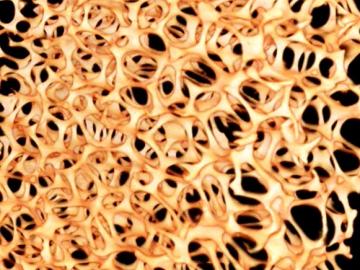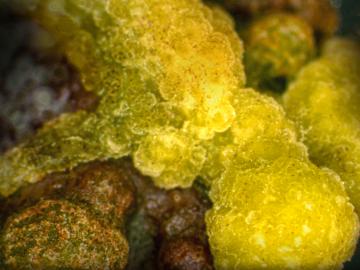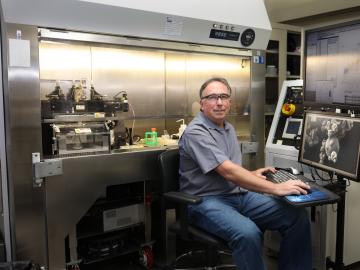Filter News
Area of Research
- (-) Clean Energy (60)
- Advanced Manufacturing (6)
- Biological Systems (1)
- Biology and Environment (4)
- Building Technologies (1)
- Climate and Environmental Systems (2)
- Computational Engineering (1)
- Computer Science (8)
- Fusion Energy (6)
- Materials (55)
- National Security (5)
- Neutron Science (23)
- Nuclear Science and Technology (11)
- Quantum information Science (3)
- Supercomputing (31)
- Transportation Systems (1)
News Topics
- 3-D Printing/Advanced Manufacturing (12)
- Artificial Intelligence (2)
- Bioenergy (7)
- Biomedical (1)
- Biotechnology (1)
- Clean Water (4)
- Composites (2)
- Computer Science (7)
- Cybersecurity (1)
- Energy Storage (4)
- Environment (12)
- Grid (2)
- Machine Learning (1)
- Materials Science (5)
- Mercury (1)
- Microscopy (1)
- Nanotechnology (2)
- Neutron Science (2)
- Nuclear Energy (1)
- Polymers (1)
- Security (1)
- Space Exploration (1)
- Sustainable Energy (8)
- Transportation (10)
Media Contacts

A team of scientists found that critical interactions between microbes and peat moss break down under warming temperatures, impacting moss health and ultimately carbon stored in soil.

Researchers demonstrated that an additively manufactured hot stamping die can withstand up to 25,000 usage cycles, proving that this technique is a viable solution for production.

Elizabeth Herndon believes in going the distance whether she is preparing to compete in the 2020 Olympic marathon trials or examining how metals move through the environment as a geochemist at the Department of Energy’s Oak Ridge National Laboratory.

Researchers at the Department of Energy’s Oak Ridge National Laboratory have received five 2019 R&D 100 Awards, increasing the lab’s total to 221 since the award’s inception in 1963.

In the vast frozen whiteness of the central Arctic, the Polarstern, a German research vessel, has settled into the ice for a yearlong float.

ORNL and The University of Toledo have entered into a memorandum of understanding for collaborative research.

Researchers at Oak Ridge National Laboratory demonstrated that metal foam enhances the evaporation process in thermal conversion systems and enables the development of compact HVAC&R units.

Researchers at Oak Ridge National Laboratory will present eight innovative technologies currently available for commercialization during a public event at ORNL on October 17.

Using the Titan supercomputer and the Spallation Neutron Source at the Department of Energy’s Oak Ridge National Laboratory, scientists have created the most accurate 3D model yet of an intrinsically disordered protein, revealing the ensemble of its atomic-level structures.

Scientists at the U.S. Department of Energy’s Oak Ridge National Laboratory have demonstrated a way to isolate and grow targeted bacteria using genomic data, making strides toward resolving the grand challenge of uncultivated microbial “dark matter” in which the vast majority of microorganisms remain unstudied in the laboratory.




